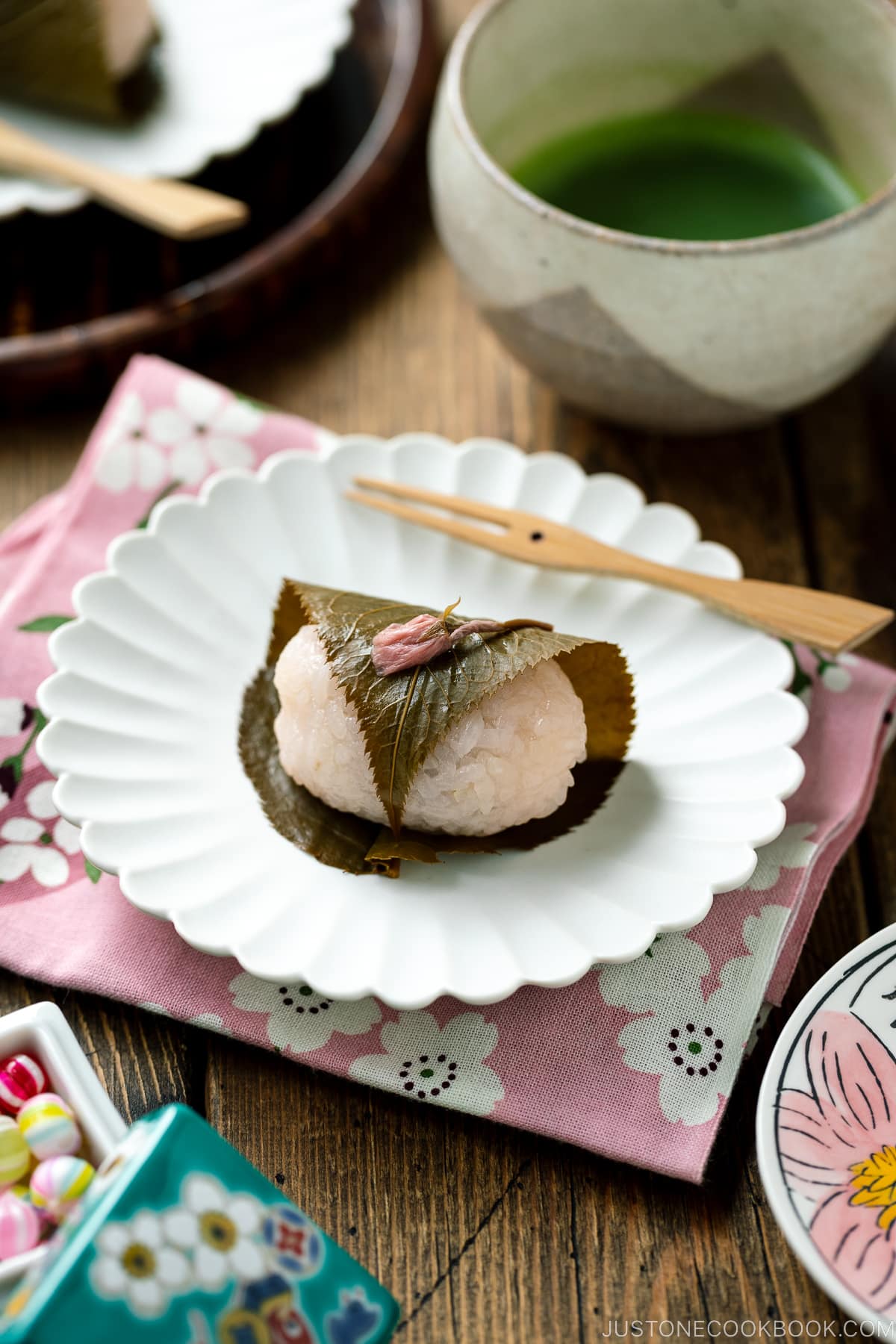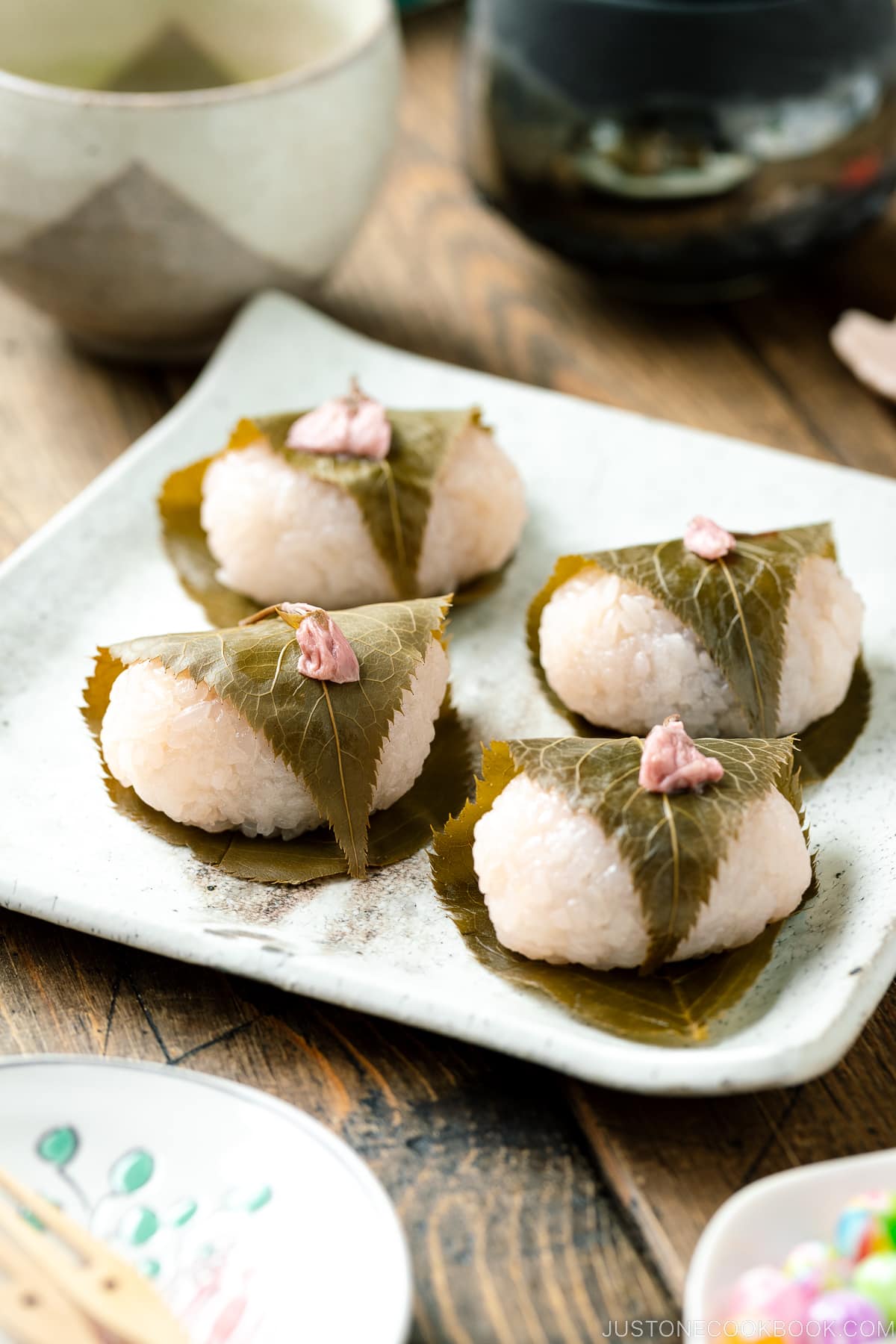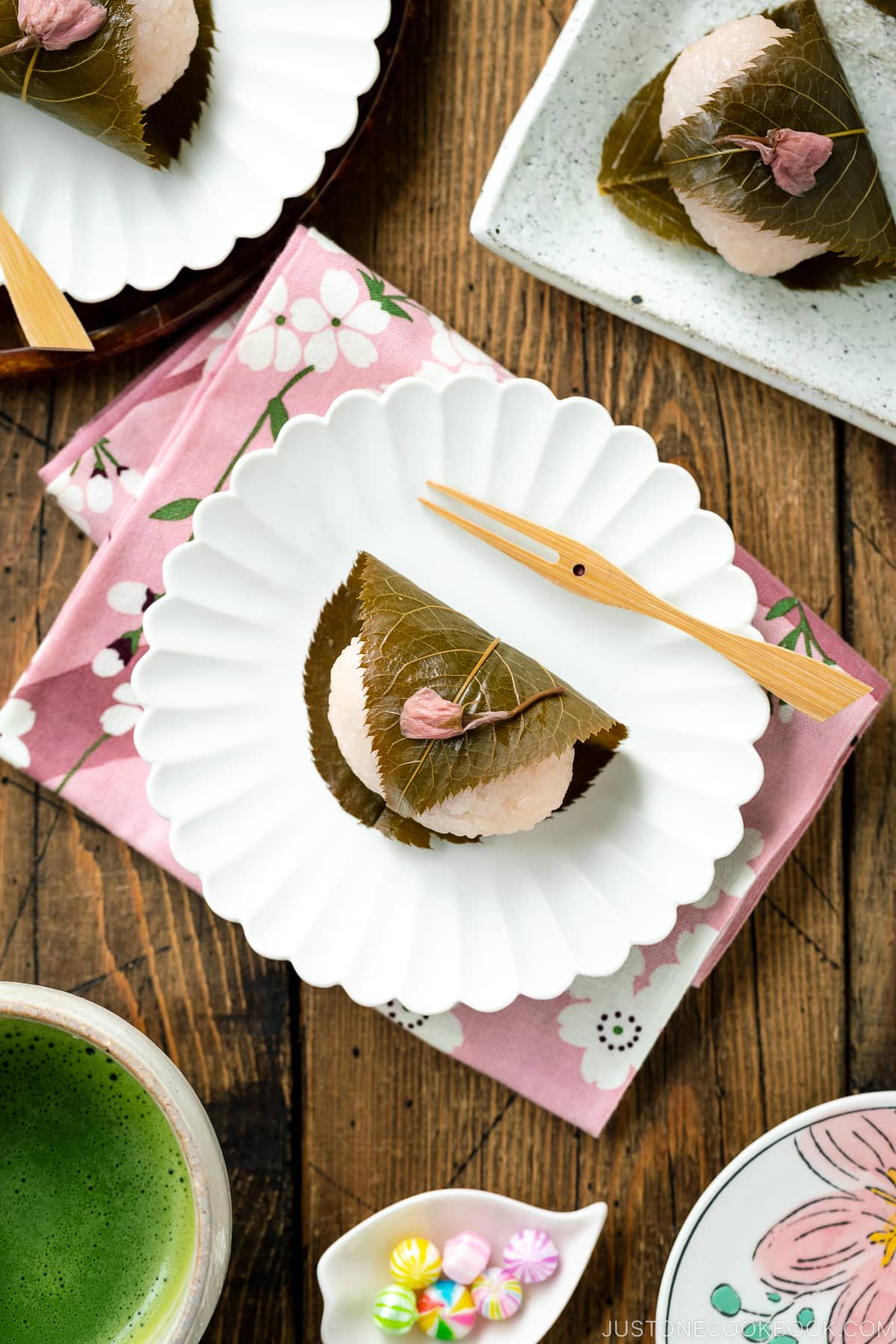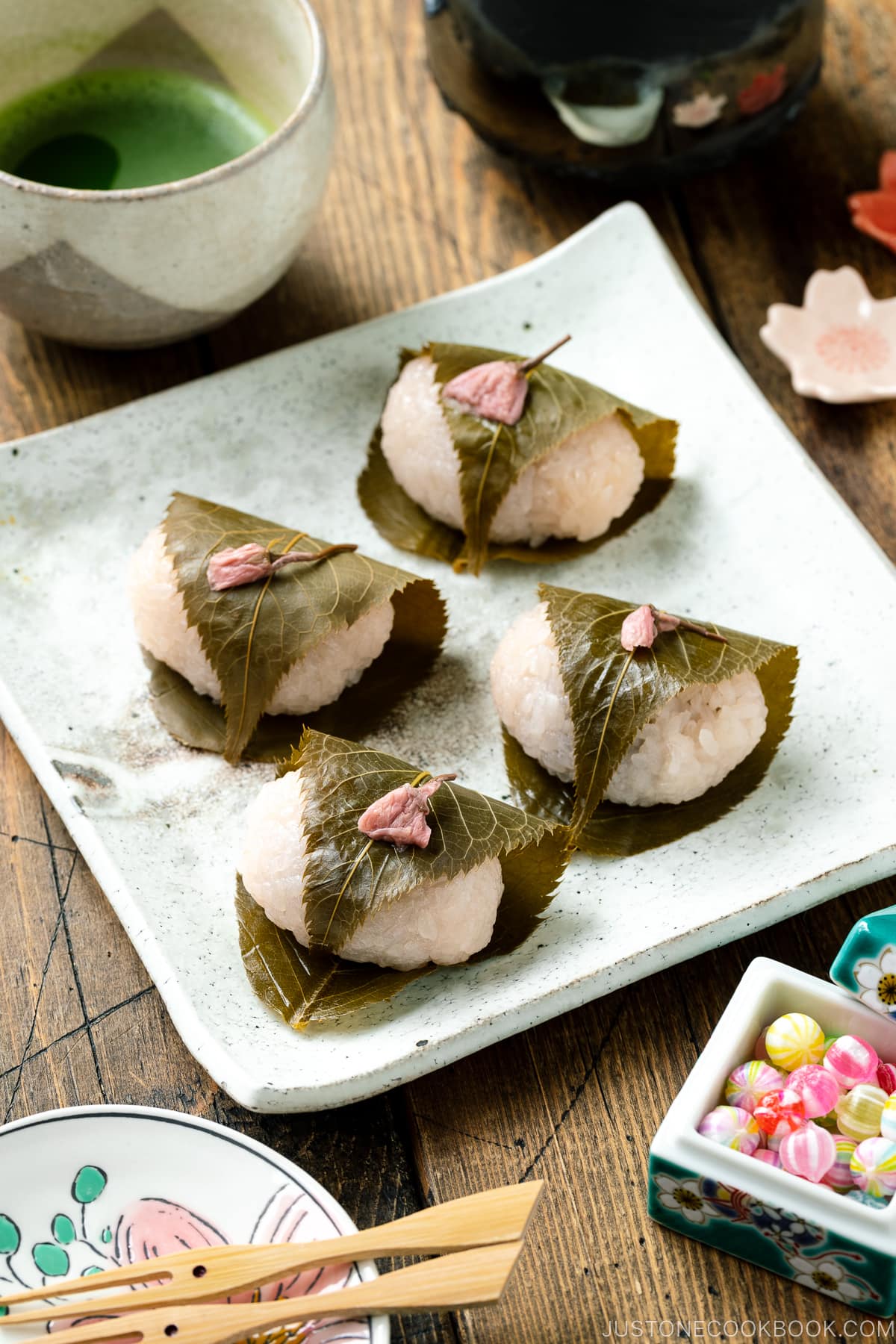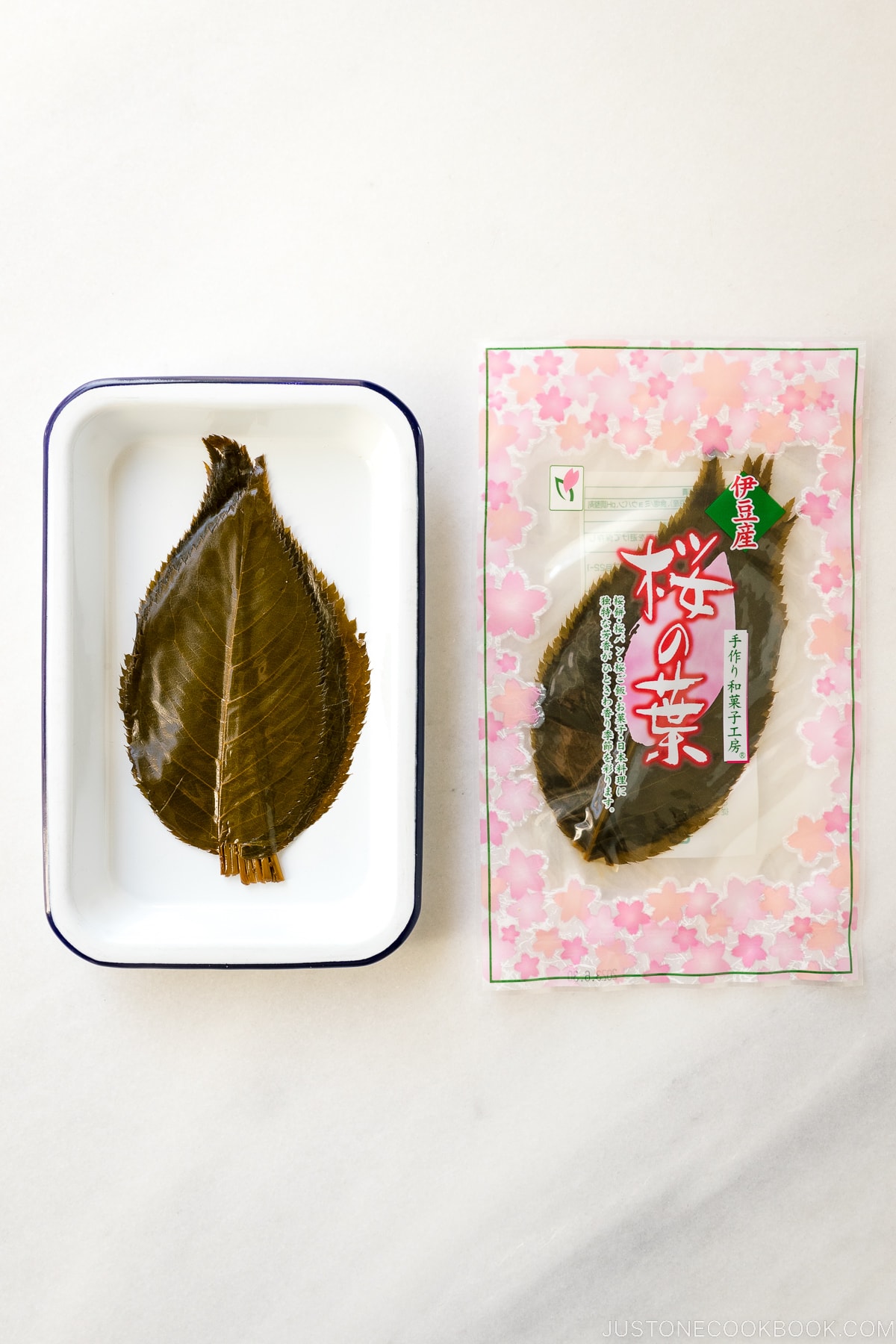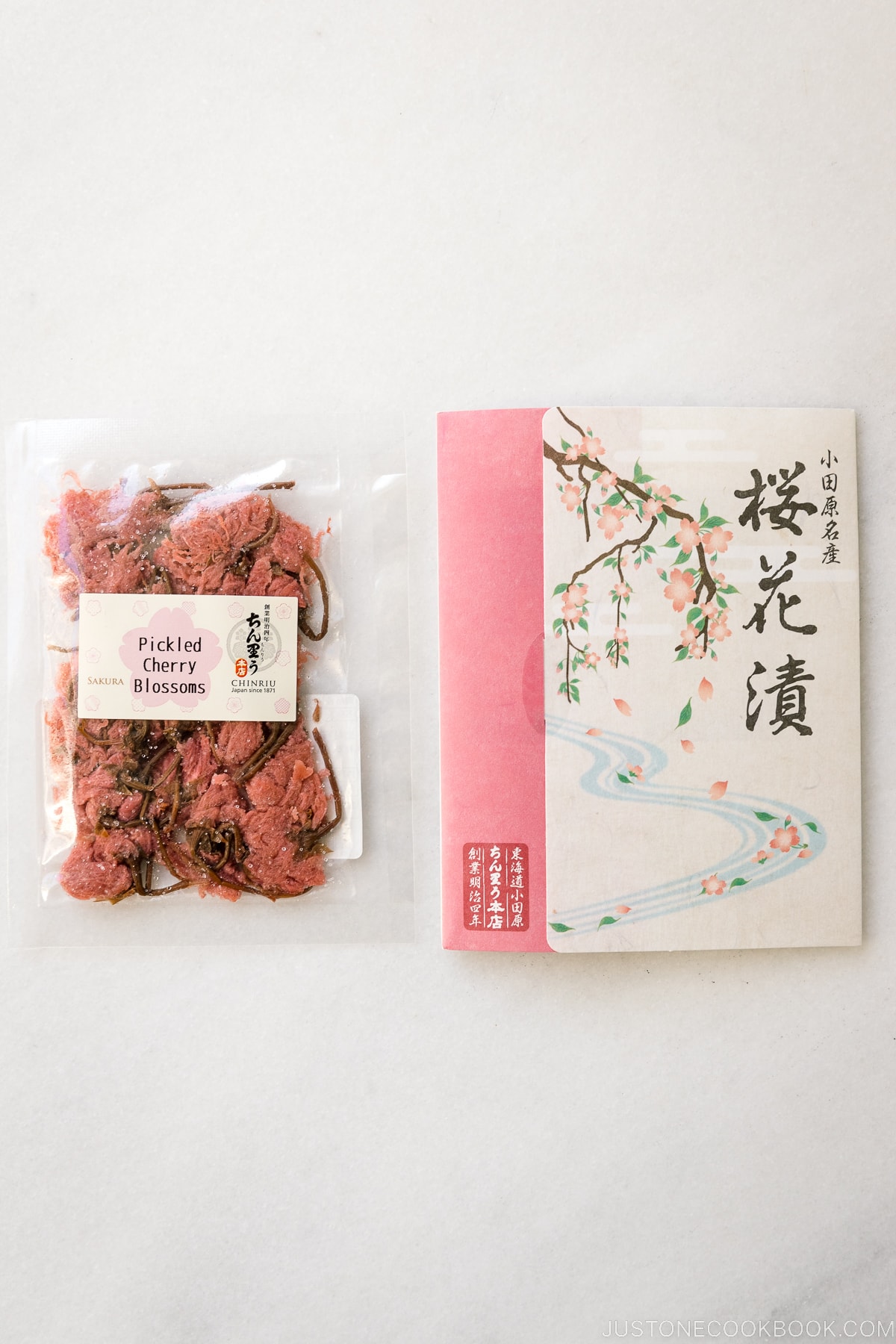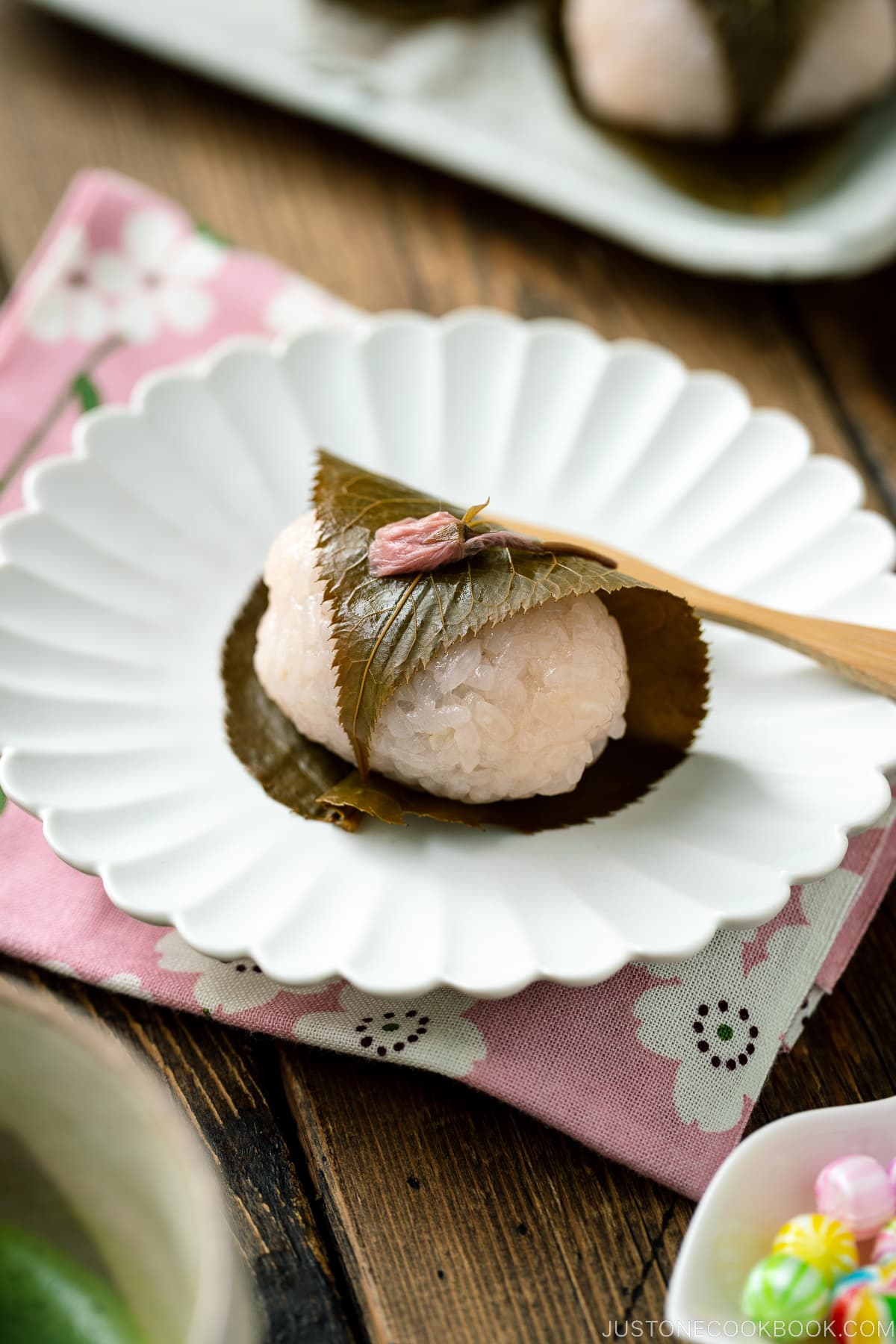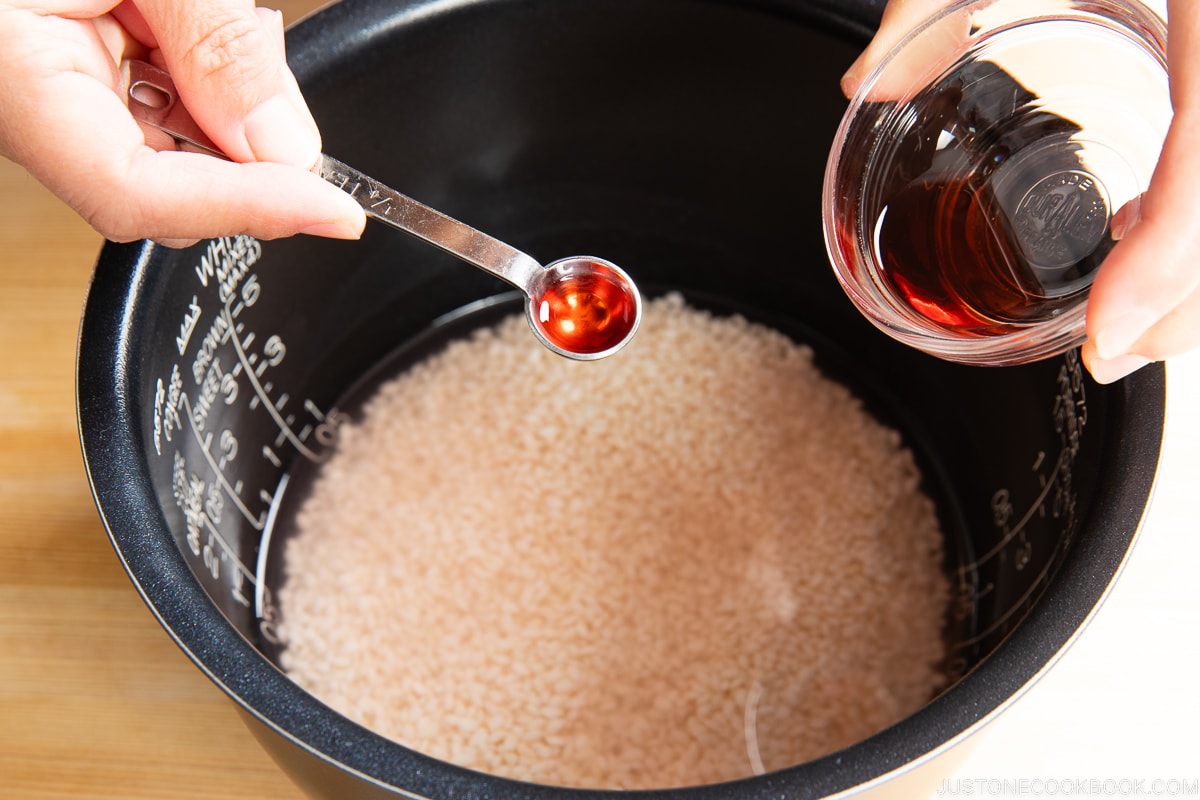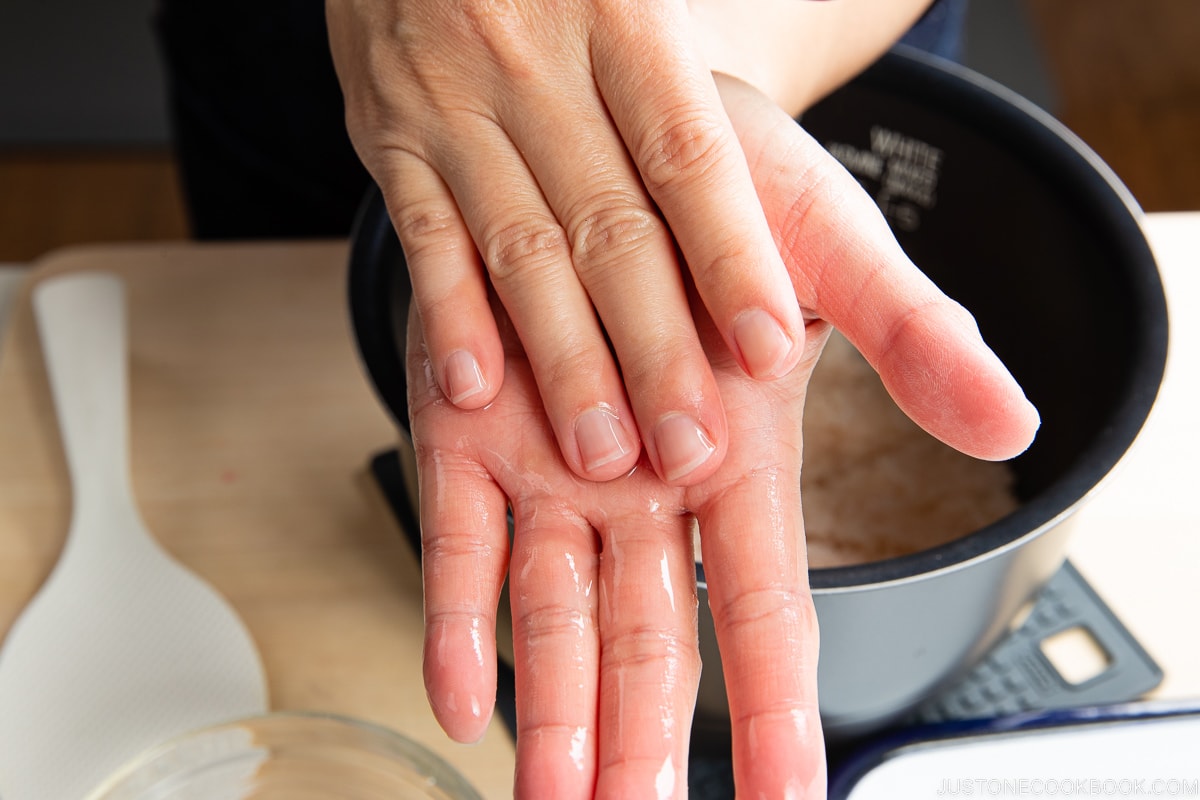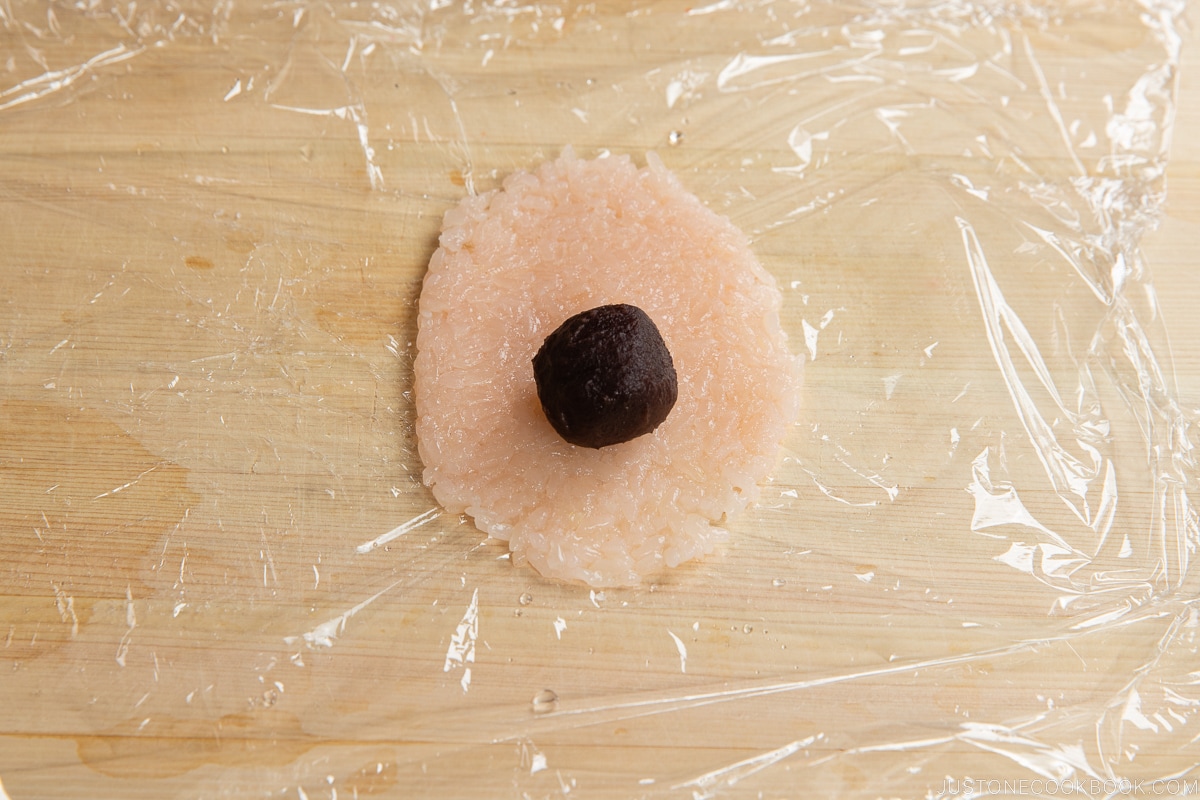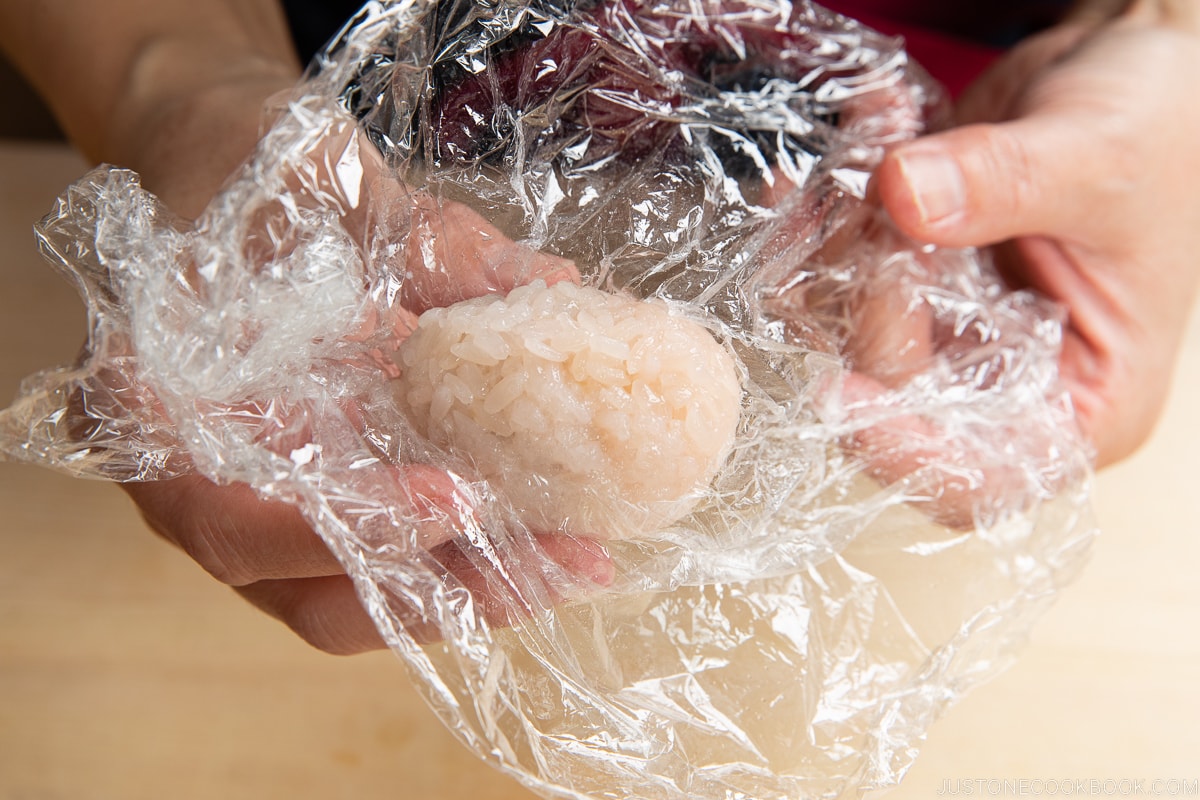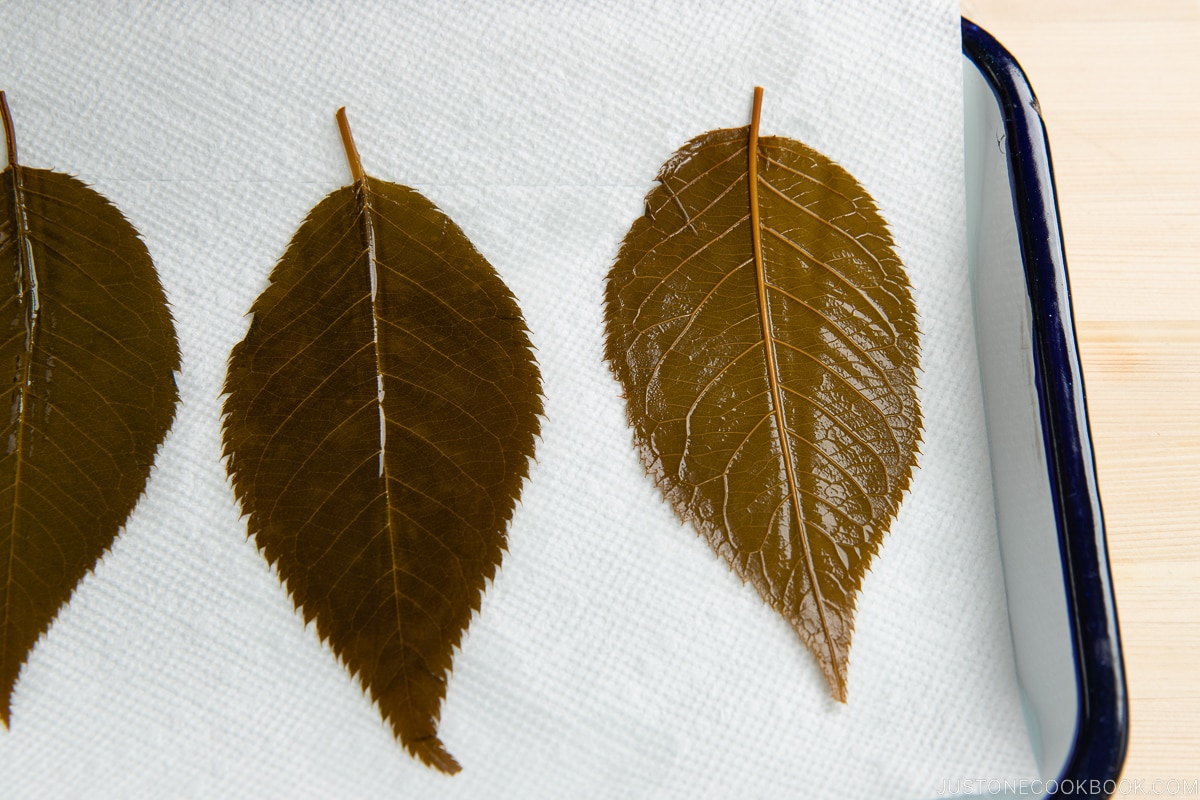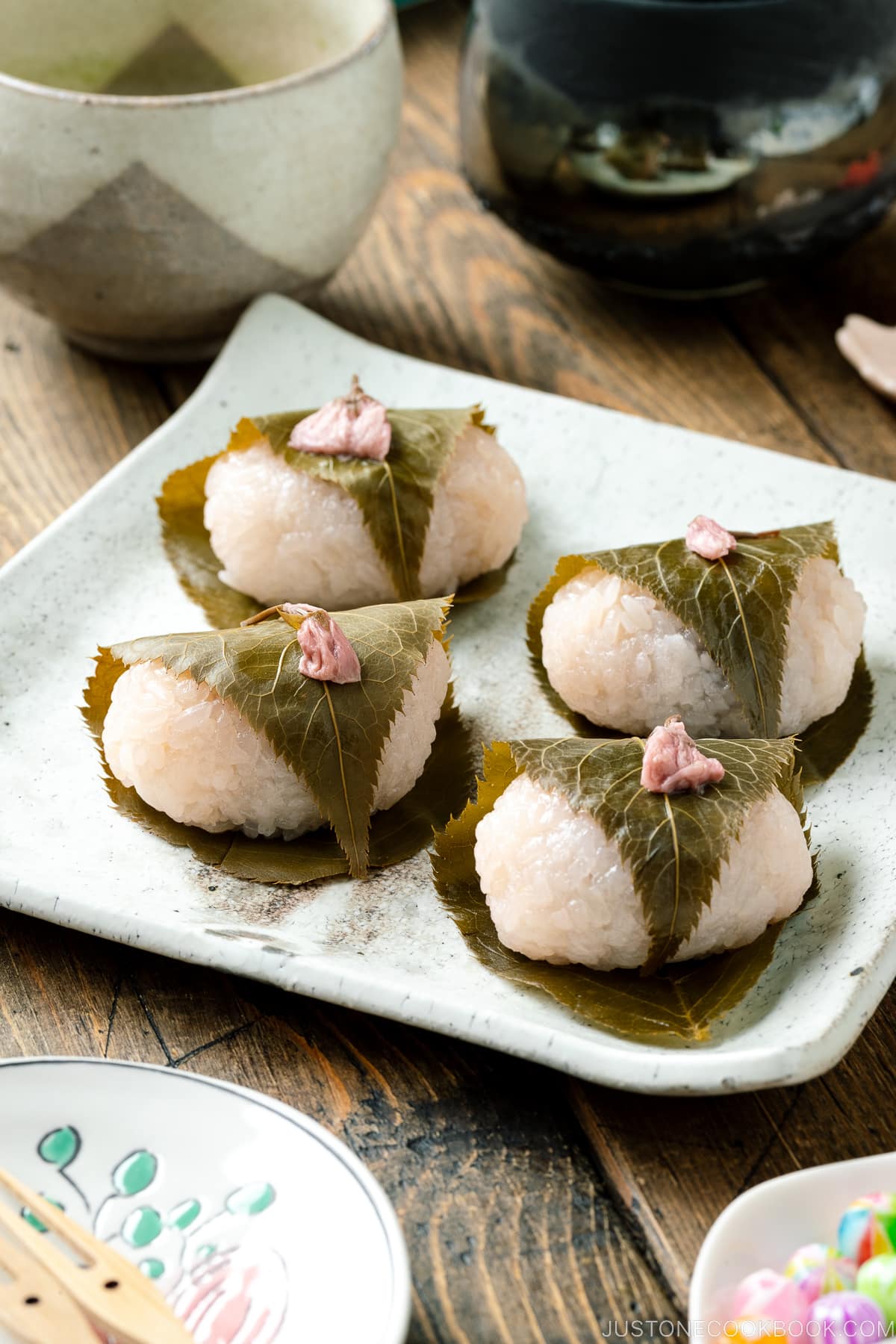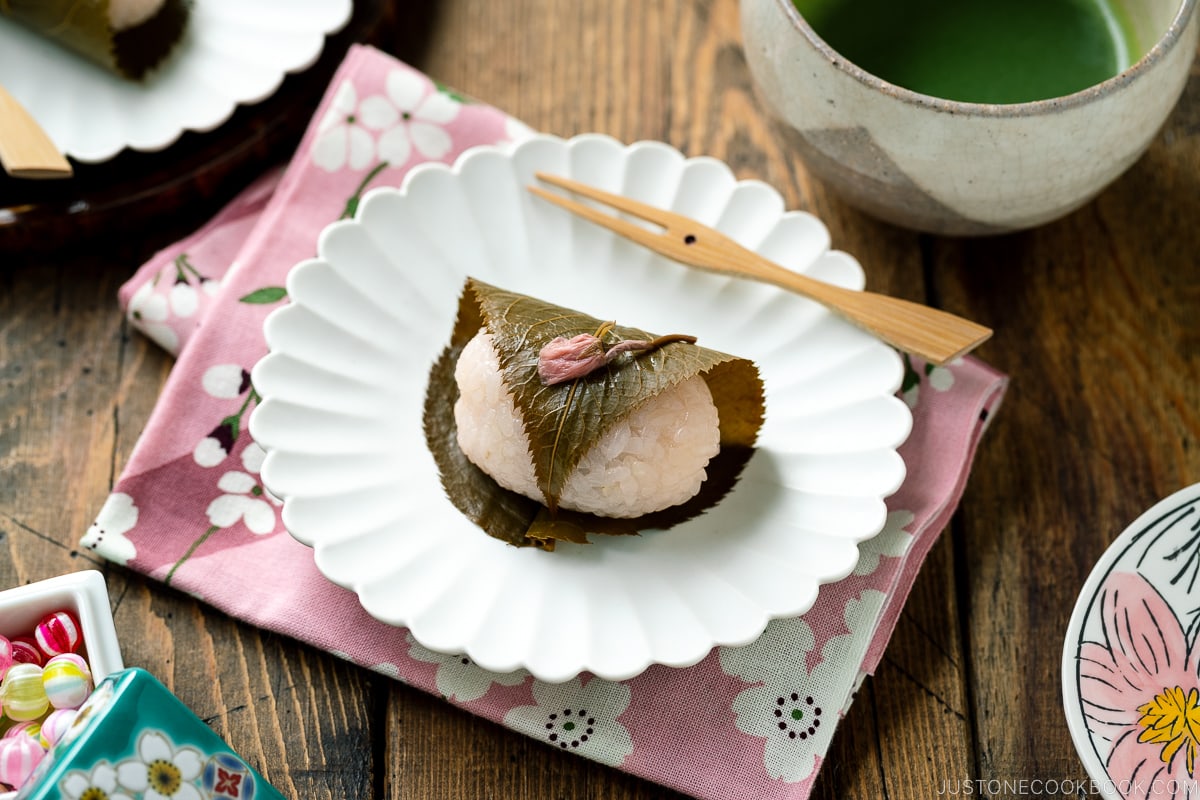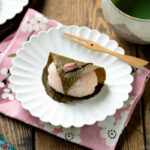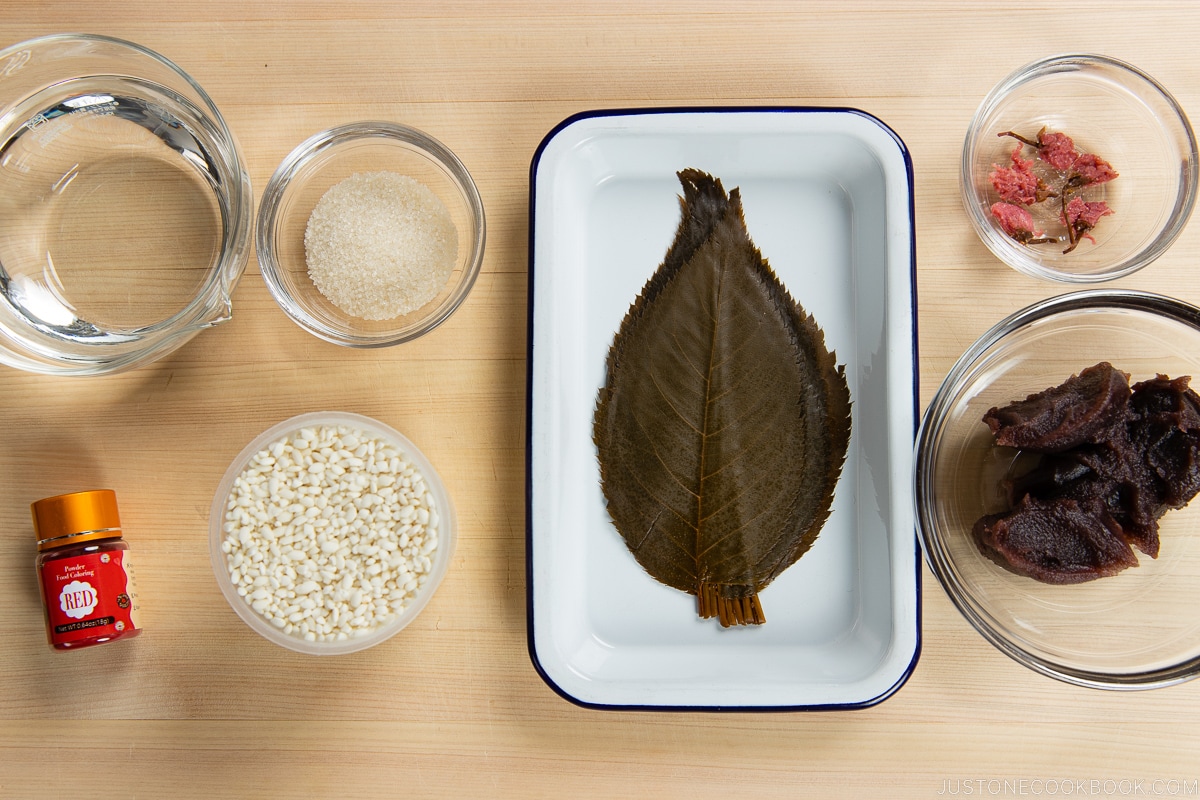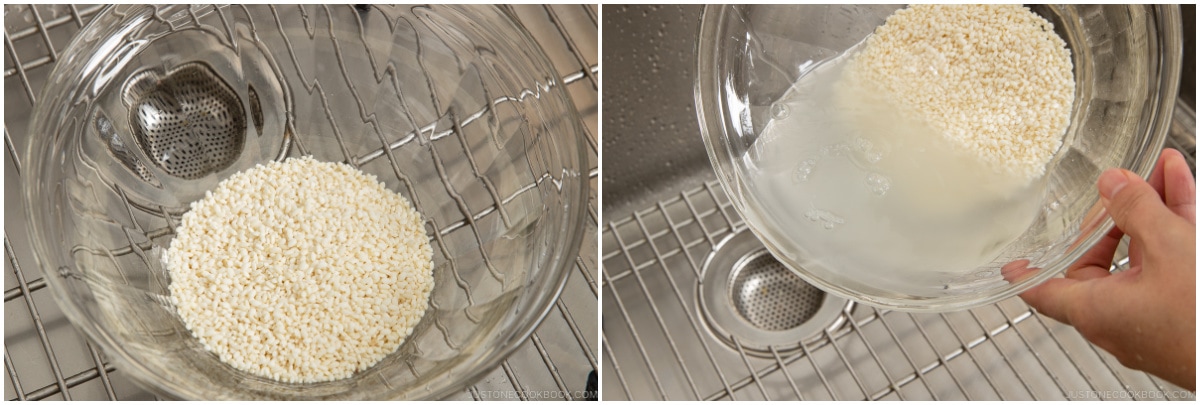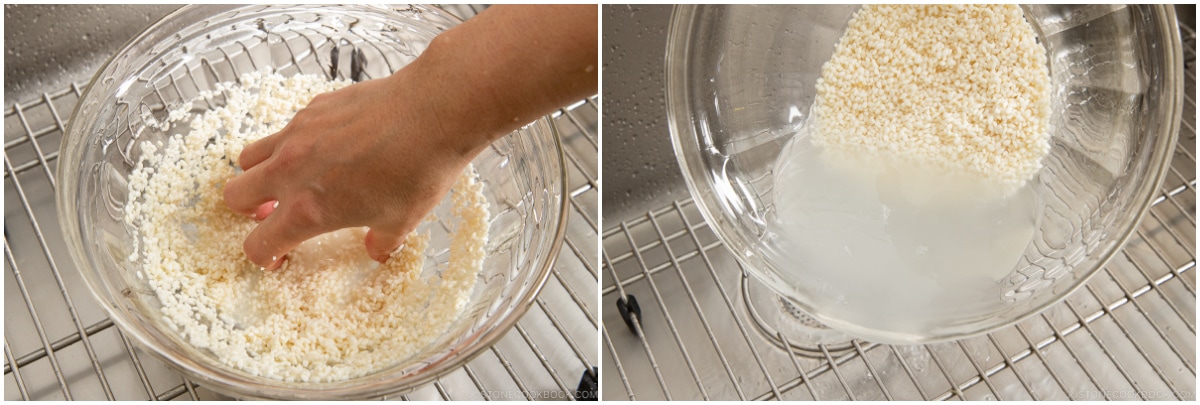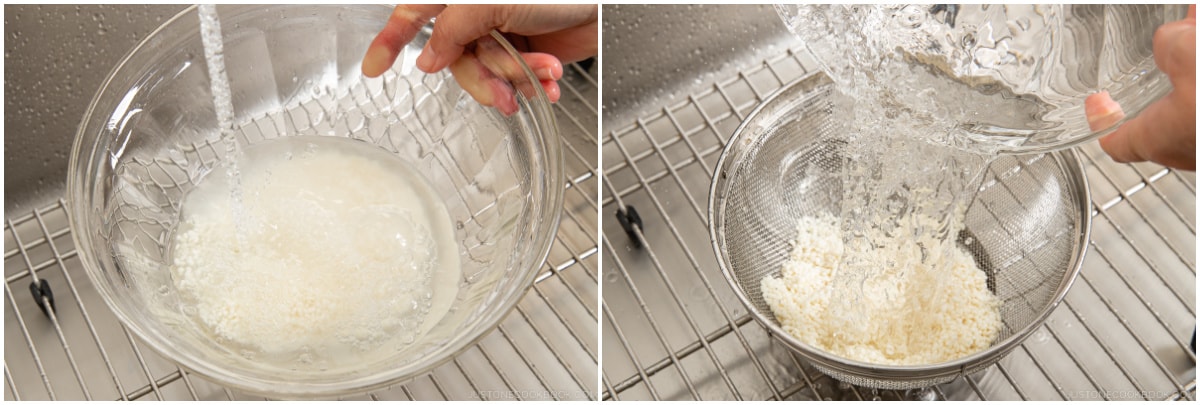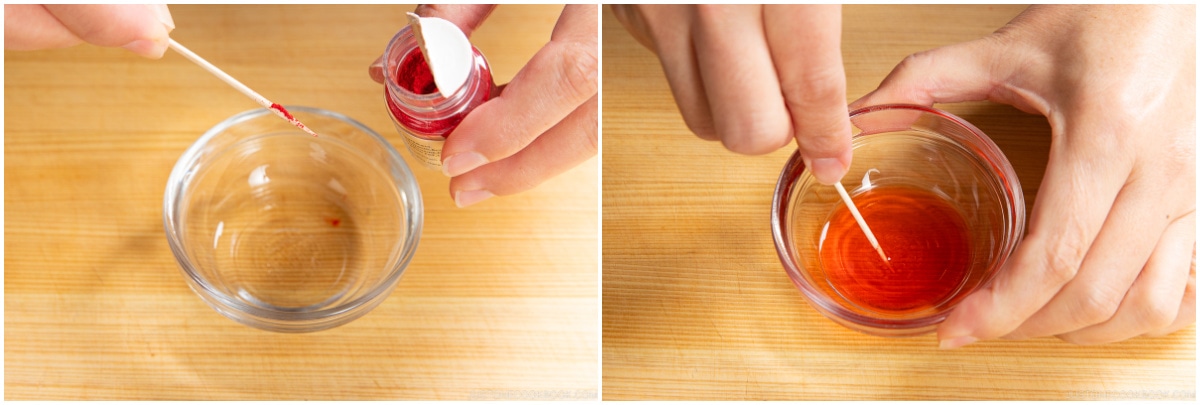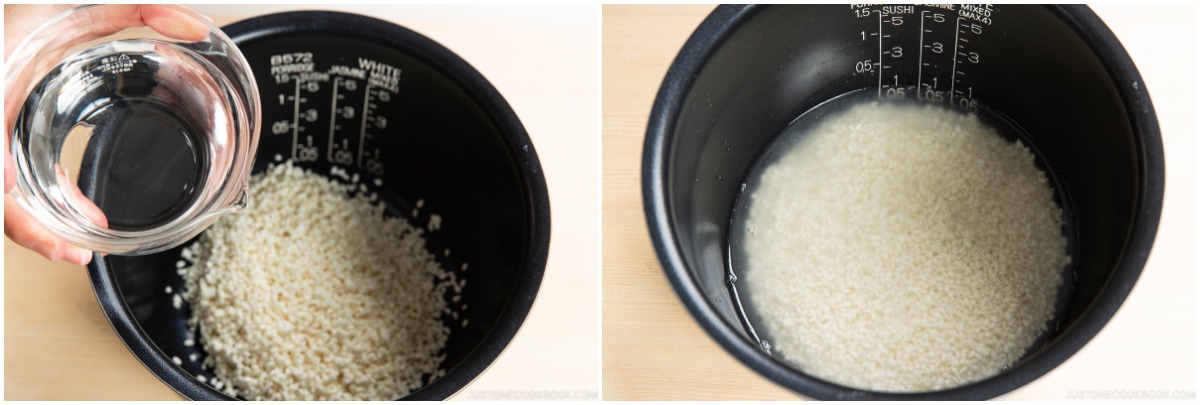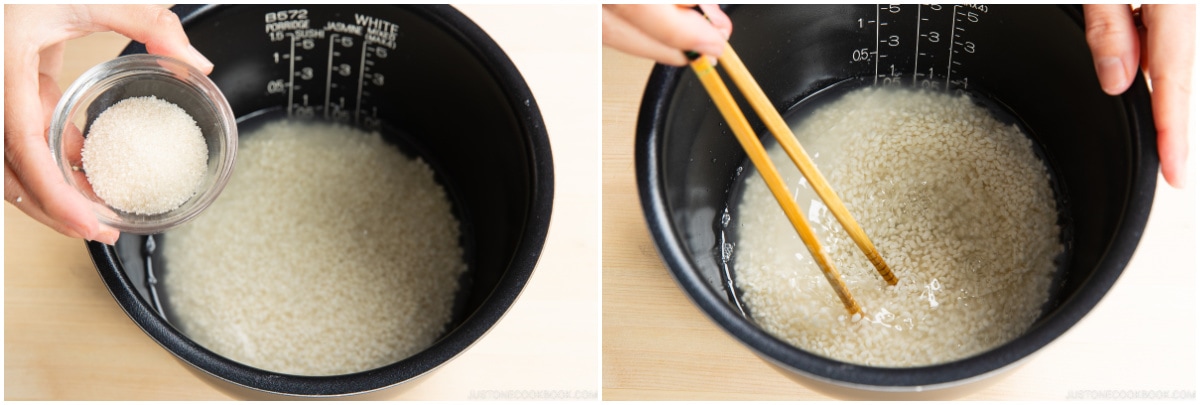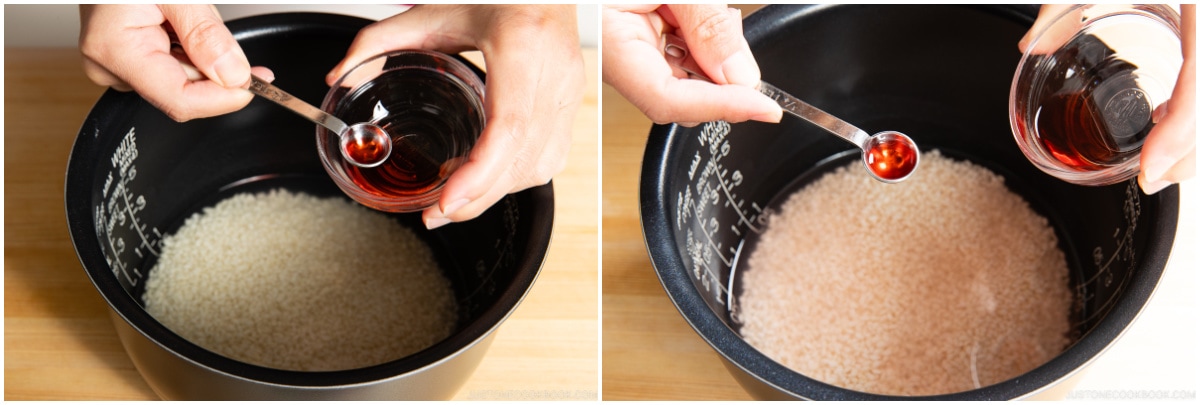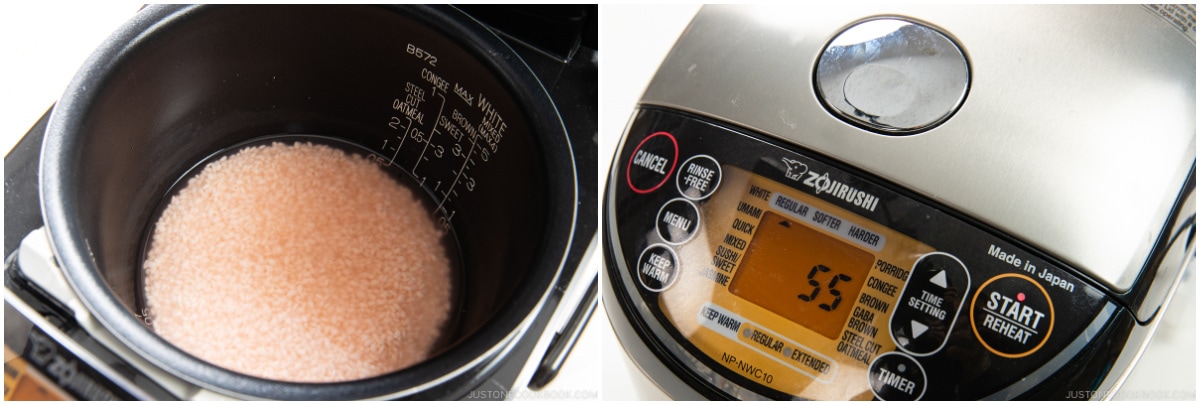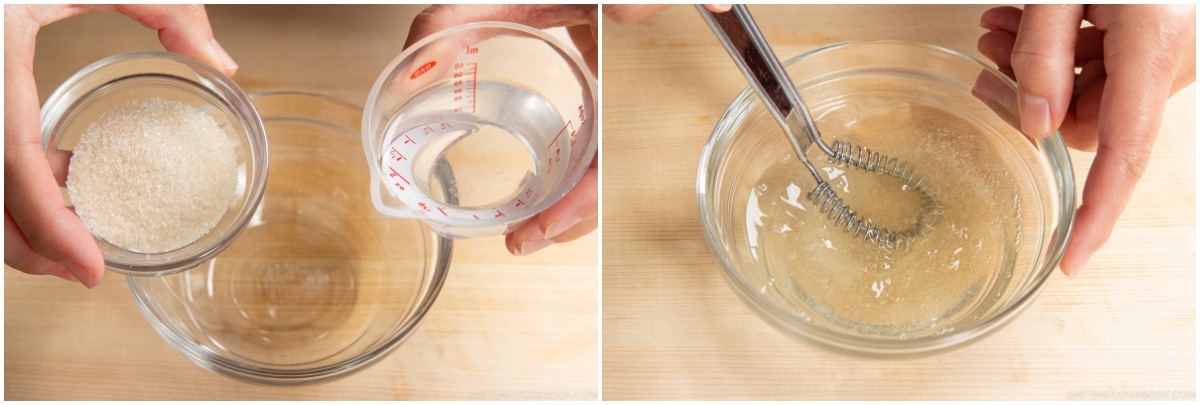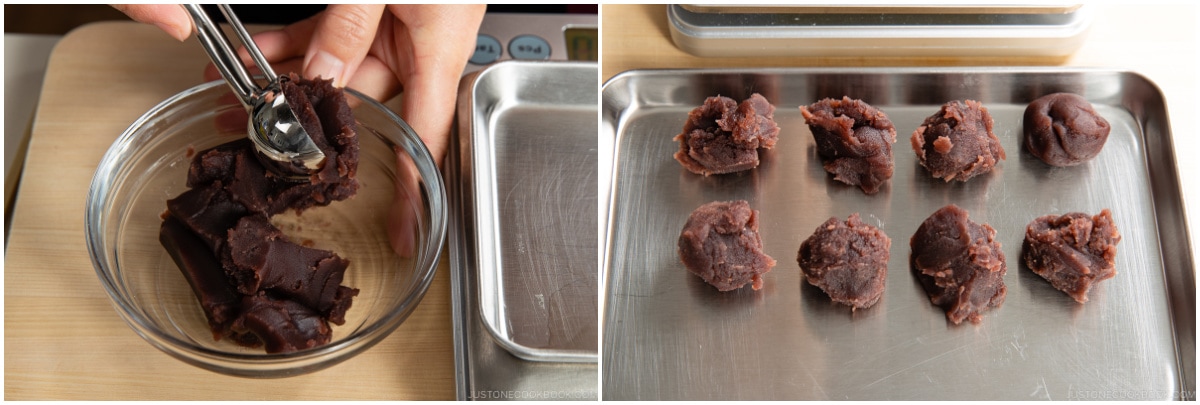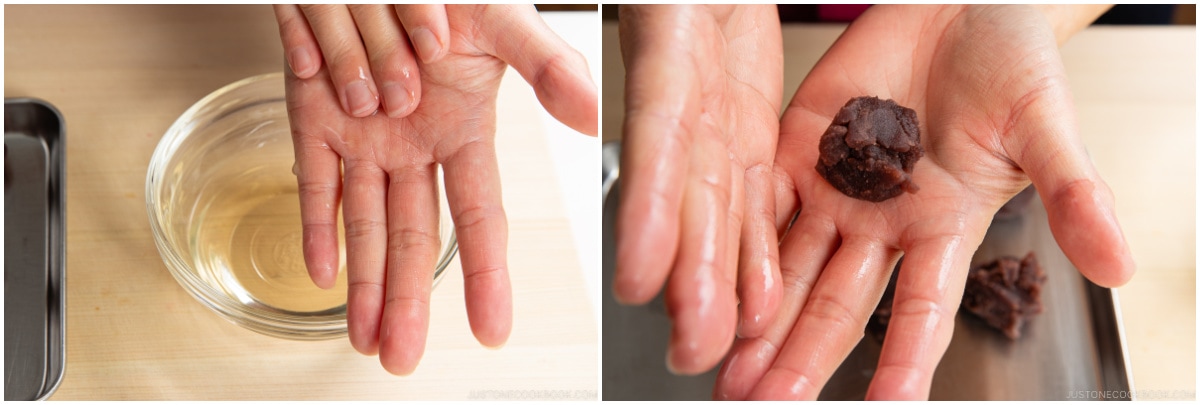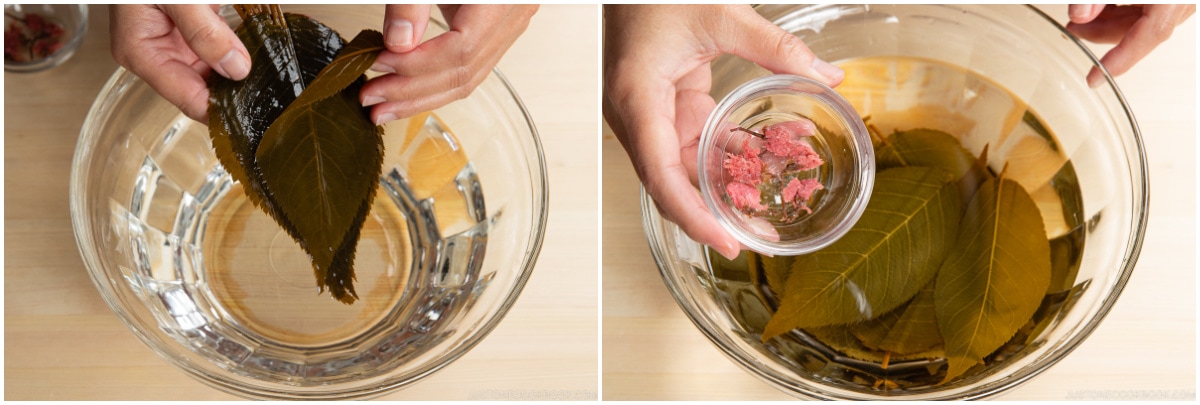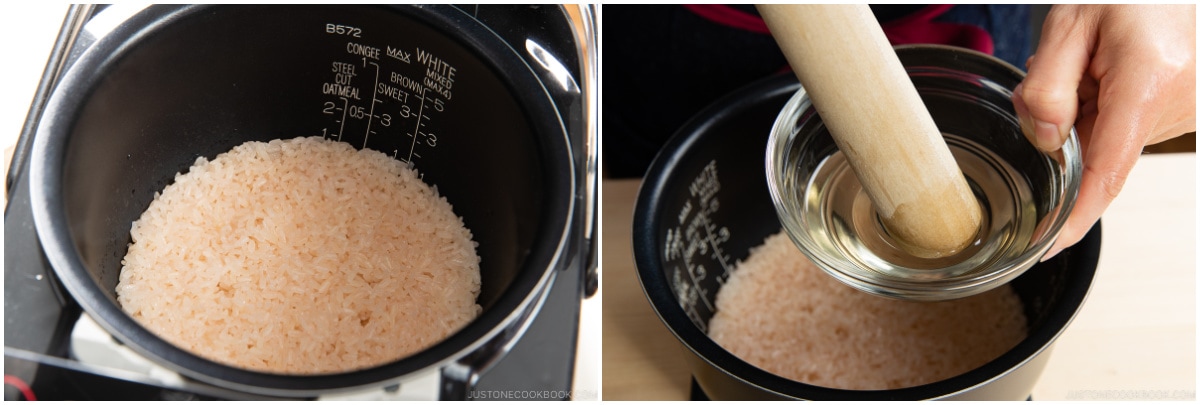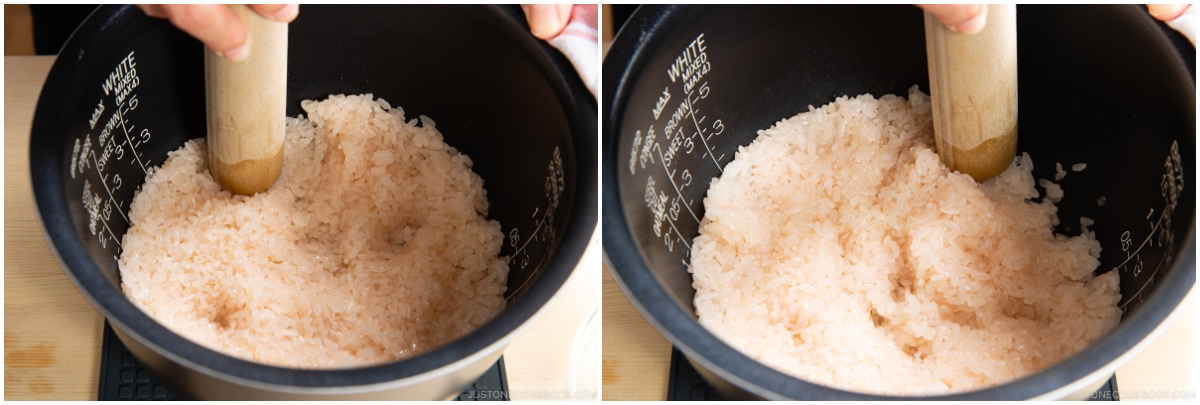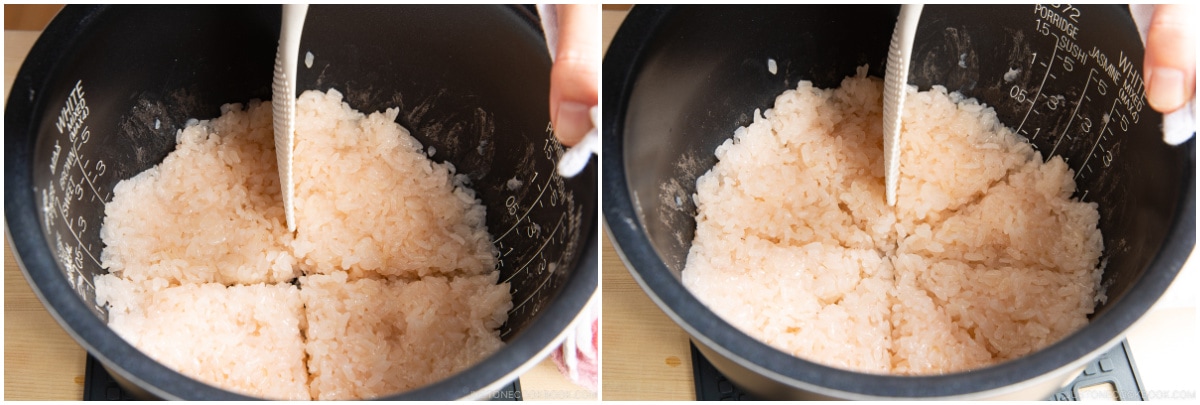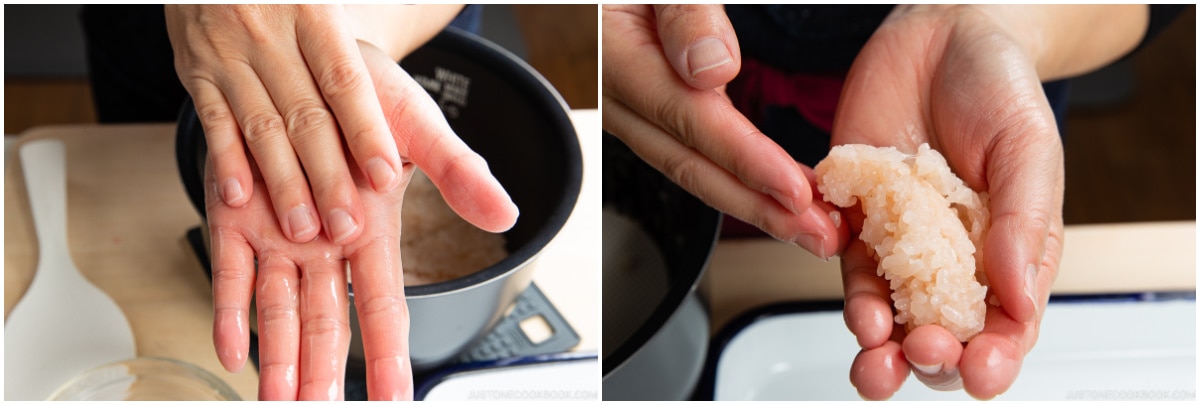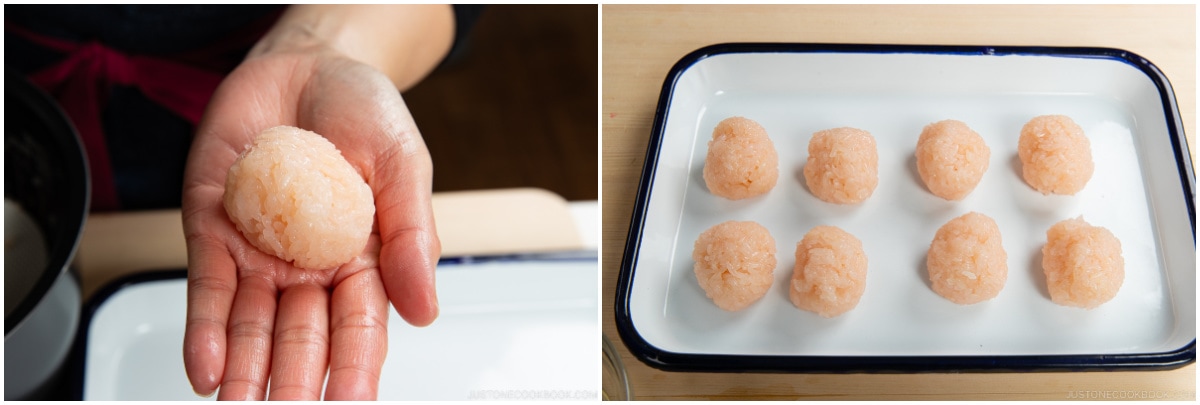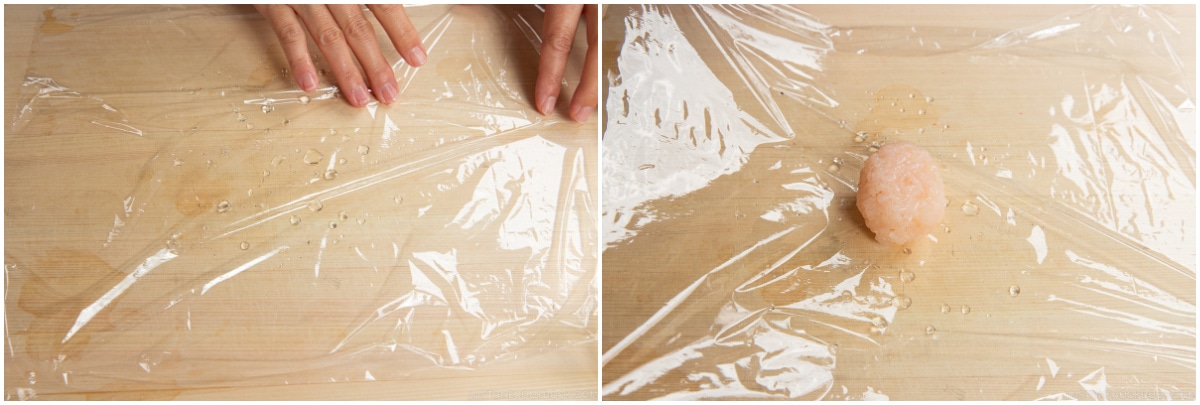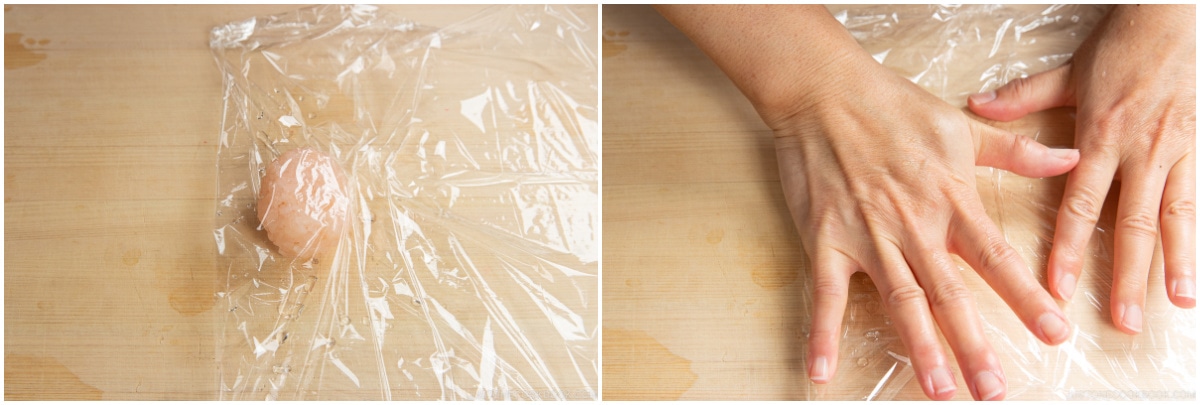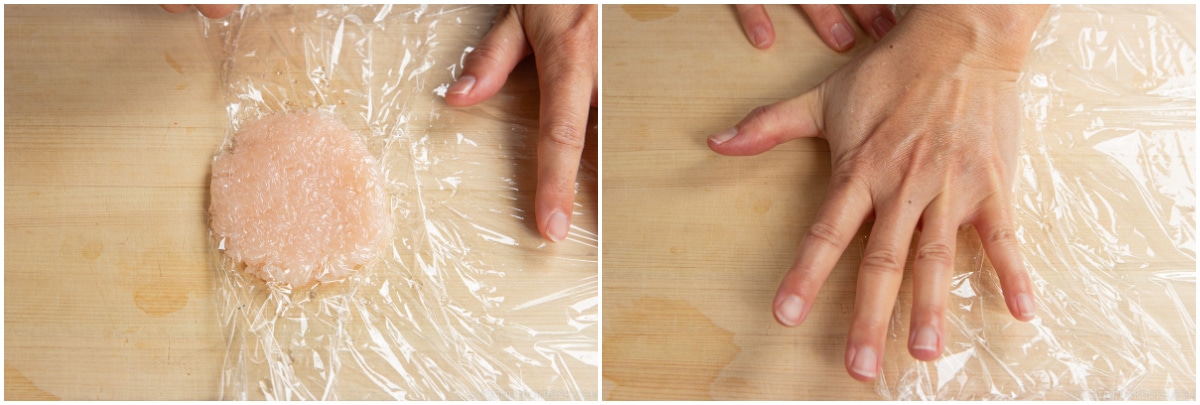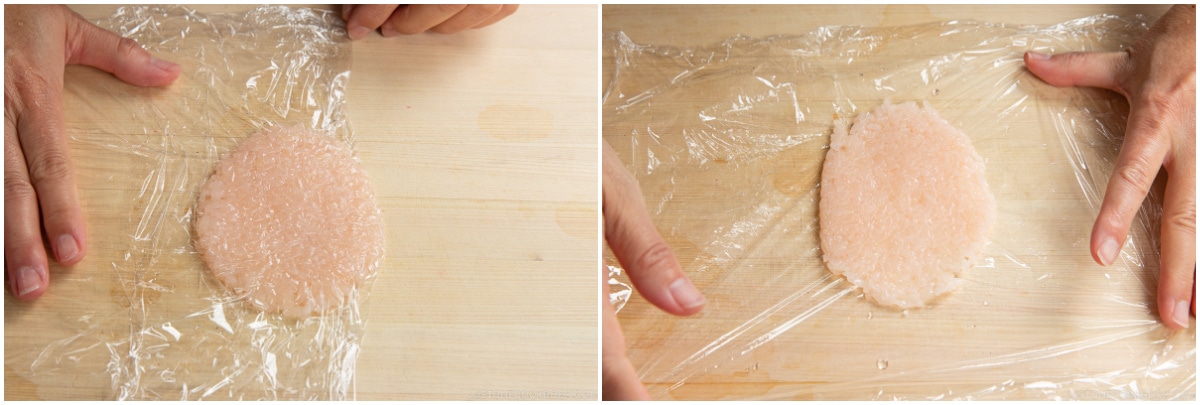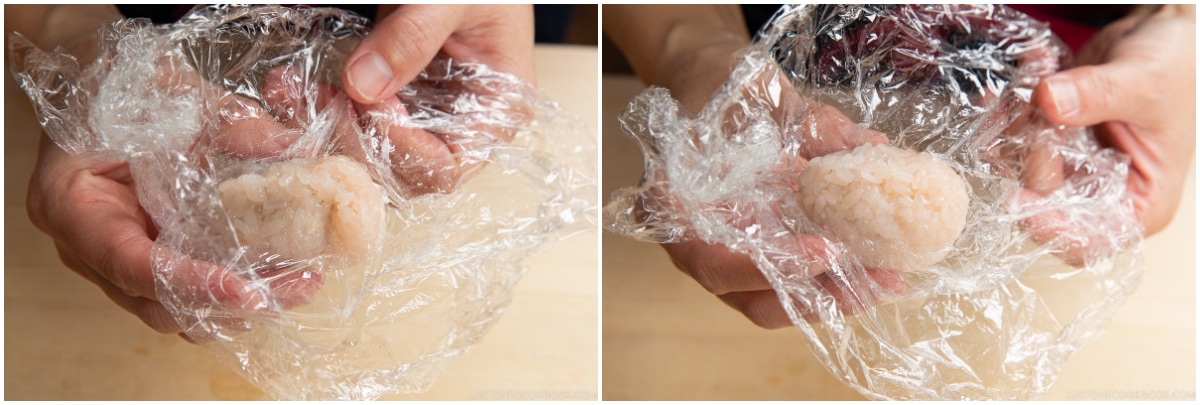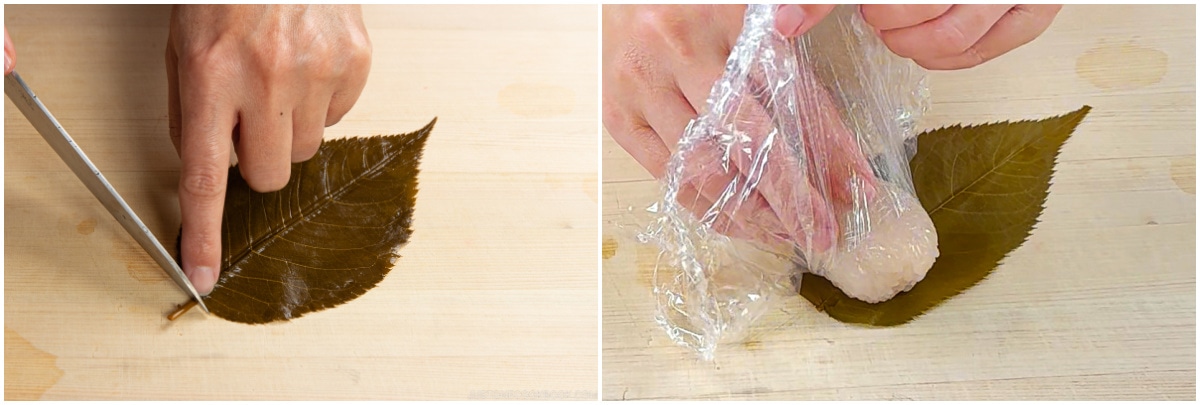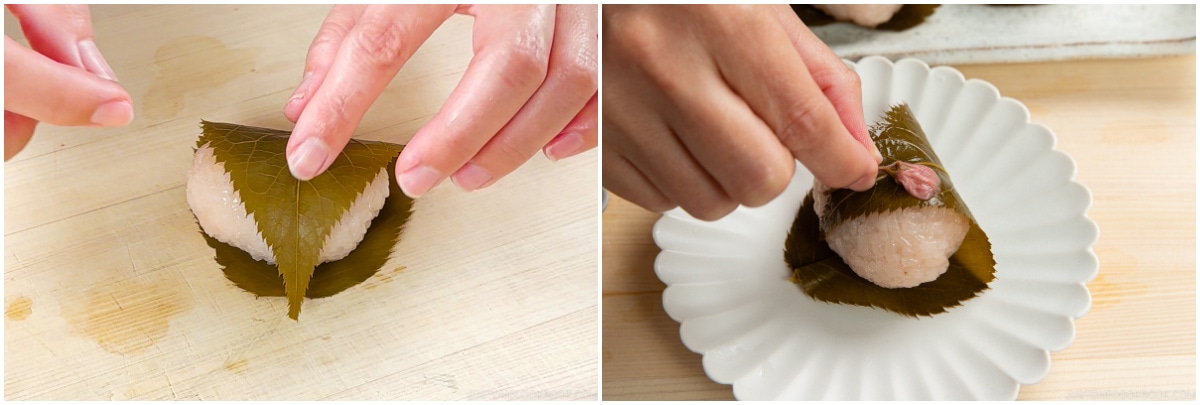Spring is in the air and flowers are blooming. Everyone anticipates cherry blossom season. While we wait for the trees to come into full bloom, let’s make Sakura Mochi (桜餅). It’s a popular spring-themed Japanese confectionery along with Hanami Dango.
What is Sakura Mochi?
Sakura mochi (桜餅) is a type of wagashi (Japanese confectionery) made of light pink colored glutinous rice with sweet red bean paste filling. It typically comes in an ellipsoid shape and blanketed by a salt-pickled sakura leaf. Sakura means cherry blossoms in Japanese and both the flowers and leaves are used in Japanese confectionery and savory cooking. This delicate pink-blushed mochi is a signature treat for Girls’ Day (known as Hinamatsuri) on March 3rd, but we also enjoy it throughout the spring season in Japan. Soft yet chewy, the flavor of the mochi balances beautifully between sweet and salty while bringing forth the fragrant note of cherry blossom.
Kanto vs. Kansai-style Sakura Mochi
You can find two styles of sakura mochi in Japan: Kanto (Tokyo)-style and Kansai (Osaka and Kyoto)-style. People in the Kanto region use shiratamako (白玉粉)—a type of glutinous rice flour—as the main ingredient for the mochi. The presentation looks more like a tiny rolled-up pink pancake that reveals sweet red bean paste in the middle. In the Kansai region, people use domyojiko (道明寺粉), which is made of glutinous rice that has been steamed, dried and coarsely ground. Even though it’s called “flour”, the grains are just slightly smaller than regular short-grain glutinous rice and they are visible.
How to Make Sakura Mochi
Now you know that there are two types of sakura mochi. Which one will we make today? In this recipe, we make Kansai-style sakura mochi. Instead of using domyojiko (the coarse glutinous rice flour), we’ll use mochigome (Japanese short-grain glutinous rice), which is much easier to get outside of Japan.
Ingredients You’ll Need
Short-grain glutinous rice – Please make sure it’s Japanese short-grain glutinous rice or mochigome, NOT the long-grain type other Asian cuisines use. Sugar Red food coloring – I use powder kind, but you can use gel. Sweet red bean paste (anko) – Get “koshian“—the smooth kind. You can use chunky “tsubuan” but koshian is typically used for sakura mochi. You can purchase it or make your own. Salt-pickled cherry blossom leaves – Please read this ingredient below. Salt-pickled cherry blossoms (optional) – for decoration
Overview: Cooking Steps
What Are Salt-Pickled Cherry Blossom Leaves?
The salt-pickled cherry blossom leaves are essential to make sakura mochi and are not used for wrapping the mochi or for decoration purposes. They are completely edible and the aroma and flavor of the salt-pickled cherry blossom leaves contribute to the final dish. The tender young leaves that sprout in May are hand-pickled, blanched in hot water, then pickled in salt water for a few days. Then, you can preserve the leaves for a year with a little bit of salt water. The leaves are mildly sweet and faintly smell of cherry blossoms. The aroma is due to an organic compound called coumarin, found in cherry blossoms and plants such as cinnamon bark and tonka beans. They are still hard to find if you don’t have a well-stocked Japanese grocery store nearby. It’s impossible to find in Asian grocery stores because other Asian cuisines don’t use these ingredients.
Where to Get Online
Sakura Mochi Cooking Tips
Tip 1: Gradually add color
My biggest mistake when I first made sakura mochi was that I added the food coloring powder directly to the pre-measured rice water while the glutinous rice was soaking. I added a little too much and it was too late to dilute it. Since then, I have done two things. First, I prepared a small bowl of red water by adding a tiny drop of red coloring powder to the water. Then, using a small spoon, I gradually added the red water to the rice water until the color turned into a pale, pastel pink. This way, I don’t accidentally make the rice water too red. The amount is so little that I can’t measure it for you, so you have to figure it out on your own and I hope my tips are helpful.
Tip 2: Wet your hands with the syrup
I used to use just water for this process, but I found the sugar-water syrup makes it easier and keeps the food safe. This syrupy water is called temizu (手水)—literally “hand water” in Japanese—and it’s typically made with one part of sugar and one part of water. I use a 1:5 ratio, by weight: 1 Tbsp of sugar (12 g) and 4 Tbsp of water (60 g). Spread the temizu on your palms and fingers before you start rolling the sweet red bean paste or glutinous rice into balls. Also, if the plastic wrap sticks to the rice, sprinkle a tiny amount of the syrup on the rice before you touch it with the plastic.
Tip 3: Accurate measurement helps make a good sakura mochi
It’s important to spread the glutinous rice into a nice oval shape so it would be easier to stuff the red bean ball later. Pre-measuring both the rice and red bean filling helps you with the perfect shaping of the mochi. I already calculated a good balance of the rice-to-red bean ratio and a good oval size to wrap the red bean ball:
38-40 grams of cooked glutinous rice (1/8 of cooked rice using 1 rice cooker cup) 15 grams of red bean paste ball
The oval shape should be 4⅓ inches (11 cm) in length and 2¾ inches (7 cm) in width.
Tip 4: Smooth out the surface of the mochi
If you look at the final dish of sakura mochi, the only visible pink “mochi” part is the sides. To make the mochi look pretty, use plastic wrap to smooth out the surface of the mochi. I dab a little bit of the syrup onto the rice and pinch any wrinkled or uneven surface of the mochi through the plastic to smooth it out. If you want to use your fingers, make sure to dip in the syrup before touching it. Otherwise, the rice will stick to your fingers and it’ll be very hard to fix the shape.
Tip 5: Face the back of the leaf outside (with more visible veins)
The above picture shows the difference between the front and back of cherry blossom leaves. As you can see, the one on the right (which is the back of the leaf) has more visible veins. We’ll use this as the presentation side for wrapping the mochi.
How to Serve Sakura Mochi
Serve sakura mochi with some delicious Japanese drinks:
Matcha Cold Brew Green Tea Cold Brew Hojicha
You can also serve sakura mochi along with other confectionery like Hanami Dango and Mitarashi Dango for a spring-themed dessert spread.
More Delicious Japanese Sweets
If you are interested in learning about wagashi, check out Wagashi Guide: History of Japanese Confectioneries.
Strawberry Mochi (Ichigo Daifuku) Anmitsu Ohagi (Botamochi) Manju Warabi Mochi
Wish to learn more about Japanese cooking? Sign up for our free newsletter to receive cooking tips & recipe updates! And stay in touch with me on Facebook, Pinterest, YouTube, and Instagram. Editor’s Note: This post was originally published on September 7, 2014. It’s been republished on February 22, 2023 with the revised recipe and new blog content and images.
